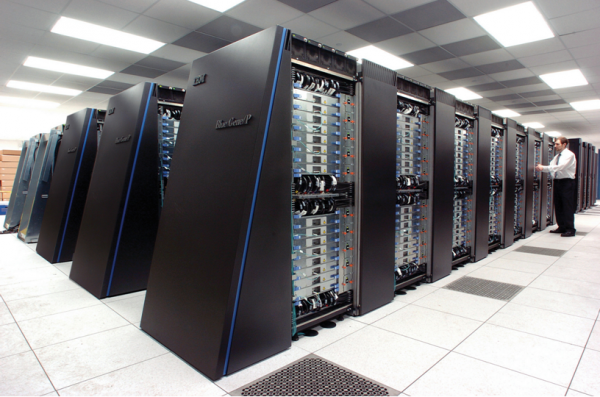U.S. Taps Three Major Technology Firms for Superconducting Computer Program
| Kizha T. Trovillas | | Dec 05, 2014 01:53 PM EST |
(Photo : en.wikipedia.org) IARPA awarded the first contracts to IBM, Northrop Grumman and Raytheon BBN Technologies to start the process of developing its Cryogenic Computer Complexity program.
U.S. intelligence agency IARPA recently announced that it will work with three major technology firms on its latest program to build a superconducting exascale computer.
IARPA awarded the first contracts to IBM, Northrop Grumman and Raytheon BBN Technologies to start the process of developing what it calls the Cryogenic Computer Complexity (C3) program. The financial details of the deal, however, have not been provided.
Like Us on Facebook
The C3 program is a multi-year research effort that will pave the way for an exascale supercomputer - a new generation of superconducting computer that is capable of about 1,000 petaflops (1 exaflop) or at least 40 times faster than the world's existing supercomputers.
The main goal of the program is to establish a solution to the extremely expensive power and cooling problems experienced in superconducting computing. The world's fastest supercomputers consume around 10 megawatts to power 20 petaflops of computation. These advances alone aren't enough to make exascale computing possible.
The power, space and cooling necessities for current supercomputers based on complementary metal oxide-semiconductor (CMOS) technology are becoming unmanageable, noted C3 program manager Marc Manheimer in a statement.
On the other hand, Manheimer said that the computers, which will be based on superconducting logic integrated with new cryogenic memory, will allow the expansion of current computing facilities without going beyond the allocated space and energy budgets.
Another benefit is that superconductors can operate at near absolute zero temperatures, keeping heat at a minimum in circuits and transistors. This technology will enable supercomputer development beyond the exascale.
IARPA divided the C3 program into two phases. The first phase, which will run for three years, will serve primarily to build the technologies required to demonstrate a small superconducting processor. For the final two years, phase two will integrate the new technologies into the working model of a superconducting computer.
Meanwhile, IBM and Nvidia are ready to build two 150-petaflop supercomputers for the U.S. Department of Energy, which will be by far the most efficient supercomputers in the world.
TagsIARPA, International Business Machines Corp, Northrop Grumman Corp, Raytheon BBN Technologies, Supercomputers, Superconducting computers
©2015 Chinatopix All rights reserved. Do not reproduce without permission
EDITOR'S PICKS
-

Did the Trump administration just announce plans for a trade war with ‘hostile’ China and Russia?
-

US Senate passes Taiwan travel bill slammed by China
-

As Yan Sihong’s family grieves, here are other Chinese students who went missing abroad. Some have never been found
-

Beijing blasts Western critics who ‘smear China’ with the term sharp power
-

China Envoy Seeks to Defuse Tensions With U.S. as a Trade War Brews
-

Singapore's Deputy PM Provides Bitcoin Vote of Confidence Amid China's Blanket Bans
-

China warns investors over risks in overseas virtual currency trading
-

Chinese government most trustworthy: survey
-

Kashima Antlers On Course For Back-To-Back Titles
MOST POPULAR
LATEST NEWS
Zhou Yongkang: China's Former Security Chief Sentenced to Life in Prison

China's former Chief of the Ministry of Public Security, Zhou Yongkang, has been given a life sentence after he was found guilty of abusing his office, bribery and deliberately ... Full Article
TRENDING STORY

China Pork Prices Expected to Stabilize As The Supplies Recover

Elephone P9000 Smartphone is now on Sale on Amazon India

There's a Big Chance Cliffhangers Won't Still Be Resolved When Grey's Anatomy Season 13 Returns

Supreme Court Ruled on Samsung vs Apple Dispute for Patent Infringement

Microsoft Surface Pro 5 Rumors and Release Date: What is the Latest?














